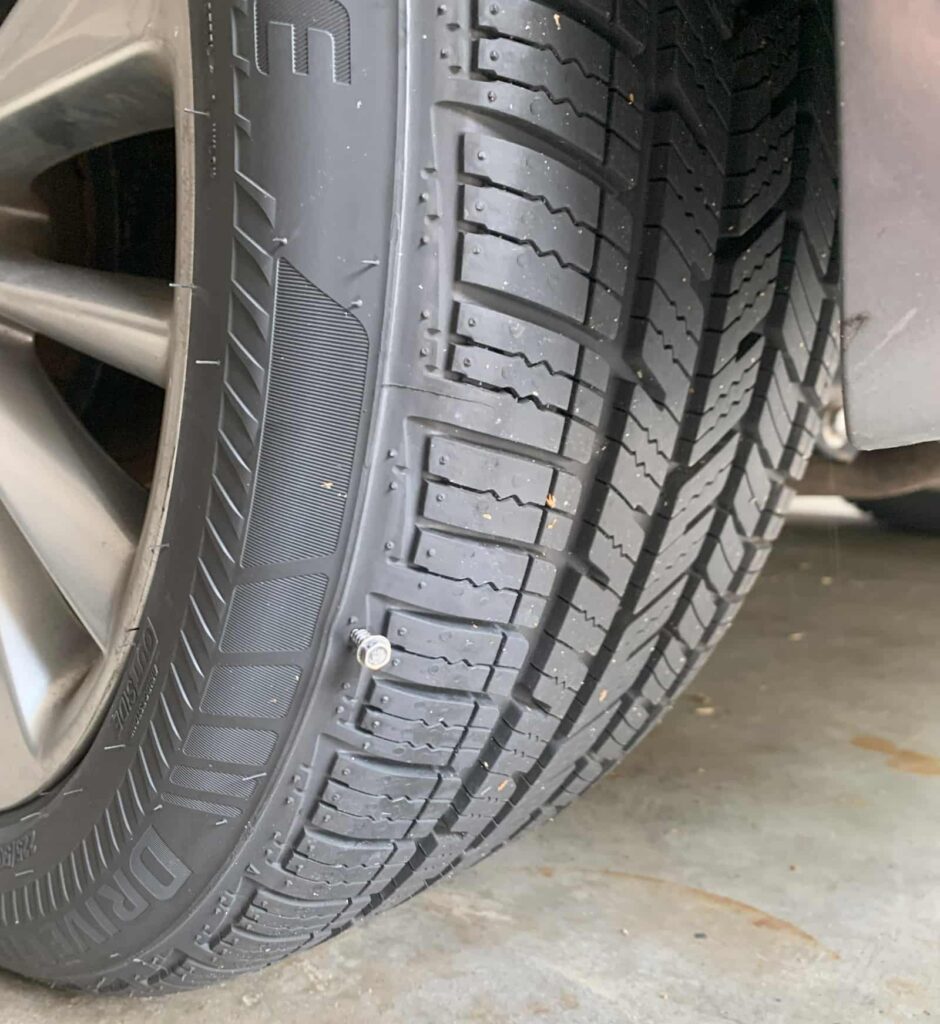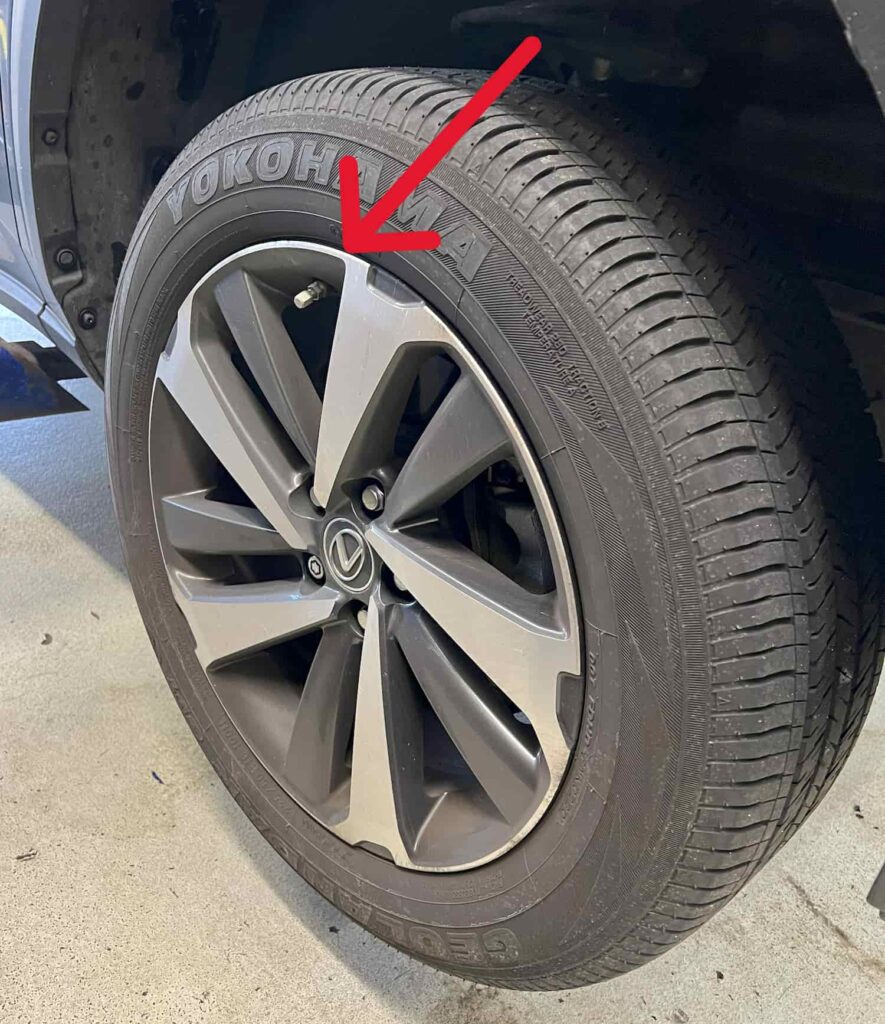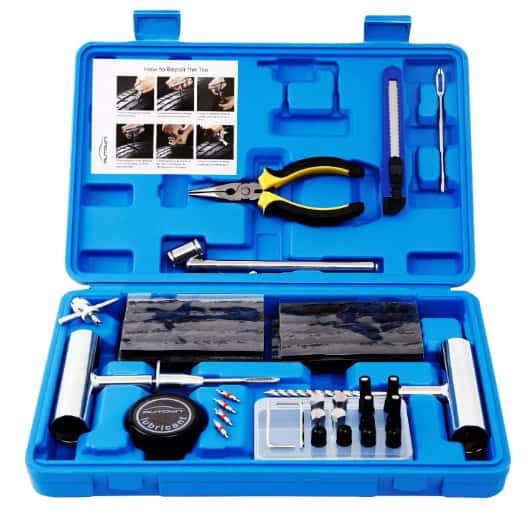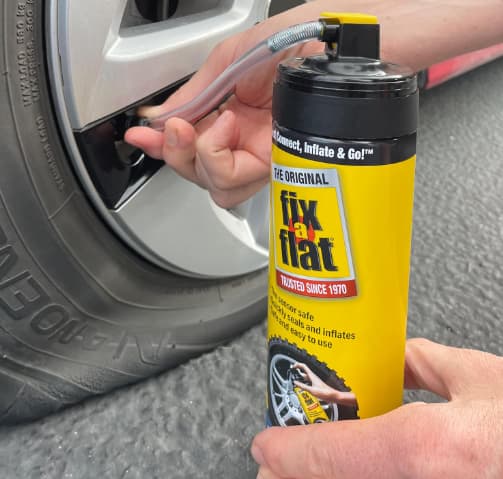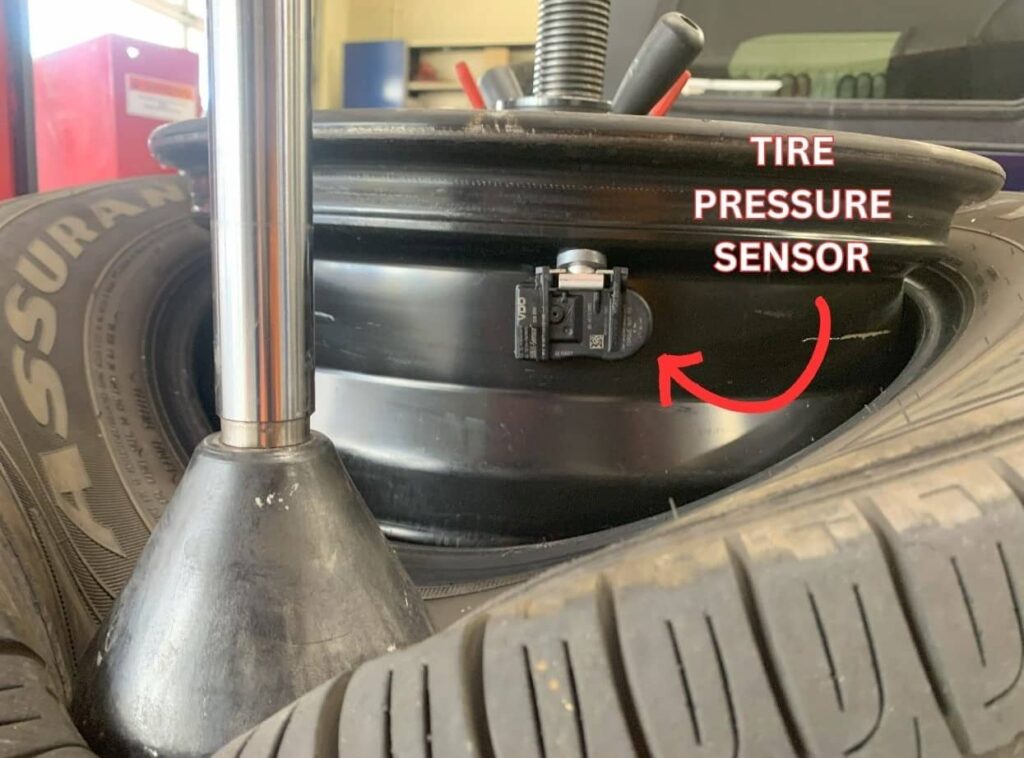The Tire Pressure Monitoring System (TPMS) is a crucial component in modern vehicles, designed to alert drivers to a significant loss in tire pressure, thereby helping to prevent flat tires and ensure safe driving conditions. When it comes to emergency tire repairs, products like Fix-a-Flat or any other tire sealant can be a quick solution to re-inflate and seal punctures temporarily. However, vehicle owners often wonder, “Is Fix-a-Flat safe for tire sensors?”
While Fix-a-Flat is marketed as tire sensor safe for most tire repairs, it’s important to use it judiciously to avoid potential damage to TPMS sensors. Tire pressure sensors, located inside the rim, are sensitive to the chemicals in tire sealants and compressed gases.
Do All Cars Have Tire Sensors?
No, not all cars have tire pressure sensors. Your vehicle manual will tell you if your vehicle uses tire pressure sensors (direct TPMS) to detect tire air pressure or wheel speed sensors (indirect TPMS). If your vehicle uses indirect TPMS there are no tire pressure sensors in the wheels.
A quick way to know if your vehicle has tire pressure sensors is to check the valve stems. If the valve stems are metal, your vehicle has tire pressure sensors.
Do All Cars Have Tire Sensors?
The potential for Fix-a-Flat to damage tire pressure sensors largely depends on the formulation of the tire sealant or Fix-a-Flat product and the design of the TPMS sensor itself. Some modern formulations of tire sealants are advertised as being TPMS-safe, meaning they are less likely to cause harm to the sensors. However, even these products can pose risks if not used according to the manufacturer’s instructions or if used excessively.
It is crucial to recognize that although applying Fix-a-Flat to a flat tire might not immediately display visible damage to TPMS sensors, the prolonged effects could prove harmful. The sealant may gradually degrade the sensor’s electrical components, leading to failure or inaccurate readings over time.
Therefore, after using Fix-a-Flat (or any tire sealant), it’s recommended to visit a tire repair professional who can inspect the tire and tire sensor for any signs of damage and clean the sensor if necessary.
Vehicle owners should also consider the warranty and guidance provided by both their vehicle manufacturer and the maker of the TPMS sensors. Some manufacturers may advise against the use of any tire sealants, while others may have specific recommendations for products that are considered safe for use with their sensors.
Types of Emergency Tire REpair Products
Emergency tire repair products are essential for drivers looking to quickly address flat tires without the immediate need for professional assistance. These products can be broadly categorized into sealants, like Fix-a-Flat, air pump, patch kits, and plug kits. Each type comes with its own set of advantages and considerations, particularly concerning their use with TPMS-equipped vehicles.
Comparison of Fix-a-Flat With Other Tire Repair Products
1. Tire Sealants (e.g., Fix-a-Flat): Tire sealants are designed for quick, temporary repairs, sealing punctures and inflating the flat tire within minutes. While convenient, their use with TPMS sensors requires careful consideration, as discussed previously. Sealants are ideal for small punctures in the tire’s tread but are not recommended for large holes or sidewall damage. They exist only to get you off the road and into an automotive repair shop.
2. Air Compressors and Pumps: These devices do not seal punctures but can re-inflate a flat tire temporarily to allow for safer travel to a repair shop. Since they do not introduce any foreign substances into the tire, they pose no risk to TPMS sensors. However, they are not a solution to the underlying problem of a leak.
3. Tire Patch Kits: Patch kits require the tire to be removed from the rim to apply a patch over the puncture from the inside. This method is more permanent than sealants but cannot be applied as a roadside emergency solution. Patching is safe for TPMS sensors, as the repair process does not interfere with the sensor’s location or operation.
4. Tire Plug Kits: Plugging involves inserting a sticky, fibrous plug into the puncture from the outside of the tire. This method can be a more durable solution than sealants and can be performed without removing the tire from the rim. However, incorrect application can damage the tire further and may affect the TPMS sensor if not done properly.
Pros and Cons of Using Fix-a-Flat Versus Other Repair Methods
Advantages:
Immediate and easy to use, requiring no tools or removal of the tire.
Temporary fix that allows drivers to safely reach a professional tire service.
Disadvantages:
Potential to clog or damage TPMS sensors if not used properly.
Not a permanent repair and may mask more serious tire issues.
Wheel and tire sensor have to be cleaned after use.
In contrast, other repair methods such as patching and plugging offer more durable solutions but require more time, effort, and sometimes professional assistance. Air compressors provide a risk-free option to inflate the tire but do not address the puncture itself.
TPMS Sensor Location
TPMS sensors are located inside each tire and attached to the inner part of the rim on the bottom of the valve stem. This positioning allows the sensor to accurately measure the air pressure inside the tire and transmit this information to the cars onboard computer system. Given their location, tire pressure sensors are susceptible to damage from tire repair materials, especially those that involve liquid sealants like Fix-a-Flat.
Considerations for Tire Repair Products
1. Risk of Sensor Damage: The proximity of TPMS sensors to the area where sealants are applied means there’s a risk of the sealant clogging the sensor, especially if the product is not designed to be TPMS-safe. Users should select products labeled as safe for TPMS or be prepared to have the sensors cleaned or replaced by a professional immediately after use.
2. Repair Method Suitability: Knowing the sensor’s location helps in choosing the most appropriate repair method. For example, tire plug repairs do not introduce materials into the interior of the tire where the sensor is located, potentially offering a safer option for tires equipped with TPMS.
3. Importance of Following Manufacturer Guidelines: Vehicle and product manufacturers often provide specific recommendations or warnings about the use of emergency tire repair products. Adhering to these guidelines can prevent unintended damage to the TPMS sensors. Many newer vehicles come equipped with their own tire sealant products, these are safe only for that vehicle.
4. Professional Inspection and Repair: After using any emergency tire repair product, a professional inspection is advisable to ensure the TPMS sensor’s functionality is not compromised. This step is crucial for maintaining the reliability of the tire pressure monitoring system.
Recommendations and Best Practices
In light of the exploration into how Fix-a-Flat and other emergency tire repair products can impact TPMS sensors, it’s paramount for car owners to navigate these situations with informed caution. The goal is to ensure not just the immediate resolution of a flat tire but also the long-term safety and efficiency of the vehicle’s tire pressure monitoring system.
Safe Use of Fix-a-Flat With TPMS Equipped Vehicles
Given the potential for Fix-a-Flat to interfere with TPMS sensor functionality, users should:
Preferentially select products labeled as TPMS-safe to minimize the risk of damage.
Use Fix-a-Flat as a temporary solution, aiming to reach a professional tire service for a permanent repair as soon as possible.
Consult their vehicle’s manual for any manufacturer-specific recommendations or warnings regarding the use of tire sealants.
Always have the tire removed from the wheel and cleaned out after using a fix a flat, slime, or any other tire sealant.
If your vehicle comes with original equipment tire sealant and air compressor, only use that.
Long Term Tire Care and Maintenance
After employing any form of emergency tire repair:
Schedule a professional tire inspection to assess the need for cleaning or replacing the TPMS sensors, ensuring that they continue to function correctly.
Consider the repair method’s impact on the tire’s future reliability and the vehicle’s safety, opting for permanent repairs whenever feasible.
Maintain regular tire maintenance practices, including pressure checks and visual inspections, to prevent emergencies where possible.
For a tire to be permanently repaired or replaced, visiting a repair facility is advisable to ensure the TPMS system and new tires are correctly installed and functioning without interference from foreign objects or sealant residue.
